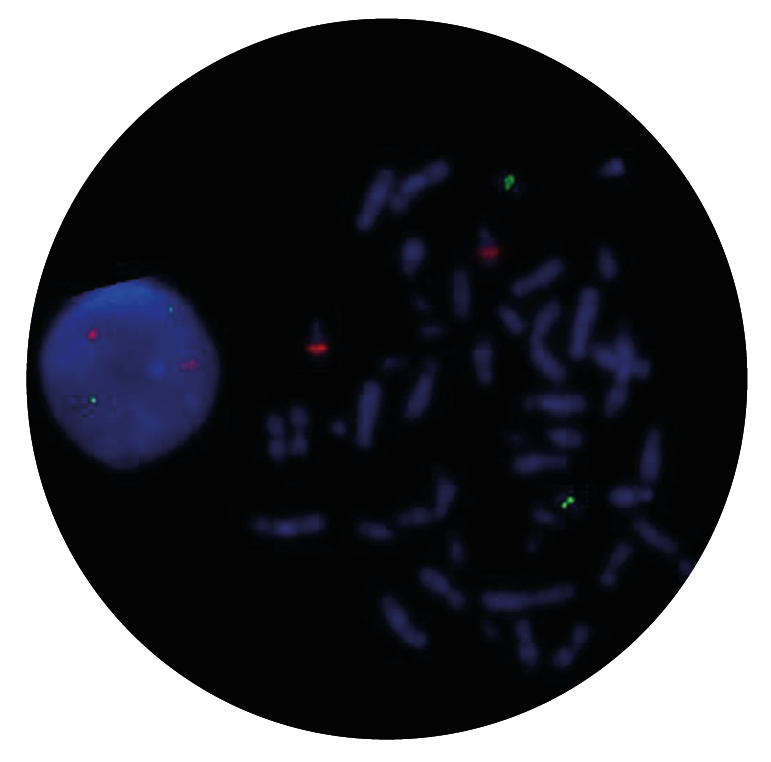Scientific Calendar September 2024
An integrated approach from screening to monitoring of a haemato-oncology disease
Why is a rapid diagnosis of APL crucial for the patient?
To reduce the cost of treatment
To prevent the development of chronic leukaemia
To manage and mitigate the high risk of severe bleeding
To minimise hospital stay duration
To improve the effectiveness of chemotherapy
Congratulations!
That's the correct answer!
Sorry! That´s not completely correct!
Please try again
Sorry! That's not the correct answer!
Please try again
Notice
Please select at least one answer
Background information
Acute promyelocytic leukaemia (APL), a subtype of acute myeloid leukaemia (AML), is marked by the presence of the fusion gene transcript PML-RARA [1,3]. Early detection and immediate treatment is crucial for APL patients due to the risk of fatal coagulation disorders and life-threatening haemorrhages at diagnosis.
Before the introduction of all-trans-retinoic acid (ATRA) and arsenic trioxide (ATO) in treatment protocols, APL had a poor prognosis. However, these therapies have significantly improved the overall survival rate, curing nearly 90% of patients [4]. Patients with variant RARA translocations exhibit varying sensitivity to treatment, with some showing resistance [2]. Therefore, it is essential to distinguish between APL patients with the PML-RARA fusion and those with variant RARA translocations.
At the start of the diagnostic process, a patient’s blood sample is usually checked for abnormalities, such as abnormal white blood cell counts and/or abnormal cell differentials. In the case of an abnormality, the morphological examination of the white blood cells in the peripheral blood reveals a large atypical promyelocyte with an eccentrically located, usually bilobed nucleus, with a folded contour and a prominent nucleolus. Circulating promyelocytes, as well as other myeloid precursors in various stages, would present with irregular azurophilic granules or Auer rods [5].
About three-quarters of the patients present at diagnosis with consumptive coagulation consisting of elevated partial thromboplastin time (PTT), prothrombin time (PT) and D-dimers, along with hypofibrinogenaemia and thrombocytopenia [5]. Diagnosis have to be confirmed by flow cytometry and molecular analysis.
Flow cytometric analysis of APL shows an immunophenotype that includes a low expression or absence of HLA-DR, CD34, CD11a, CD11b and CD18. Additionally, bright expression of CD33 is often seen with a mixed expression of CD13. Many cases show expression of CD117, although it tends to be weak. 20% of cases express CD56 which has been associated with poor prognosis.
Fluorescence in situ hybridisation (FISH) is highly sensitive, making it a valuable tool for diagnosing APL by identifying translocations. The ability of FISH to provide rapid and accurate results is particularly important in the context of APL, where timely initiation of appropriate treatment can prove to be lifesaving.

References
[1] Bruneau J (2019): WHO classification of tumors of hematopoietic and lymphoid tissues. Hematopathology: 501-505.
[2] Creutzig U et al. (2012): Diagnosis and management of acute myeloid leukemia in children and adolescents: recommendations from an international expert panel. Blood. The Journal of the American Society of Hematology 120.16: 3187-3205.
[3] Jimenez JJ et al. (2020): Acute promyelocytic leukemia (APL): a review of the literature. Oncotarget 11.11: 992.
[4] Tomita, Akihiro, Hitoshi Kiyoi, and Tomoki Naoe. (2013): Mechanisms of action and resistance to all-trans retinoic acid (ATRA) and arsenic trioxide (As 2 O 3) in acute promyelocytic leukemia. International journal of hematology 97: 717-725.
[5] Yilmaz M et al. (2021): Acute promyelocytic leukemia current treatment algorithms. Blood Cancer Journal. 11:123.




